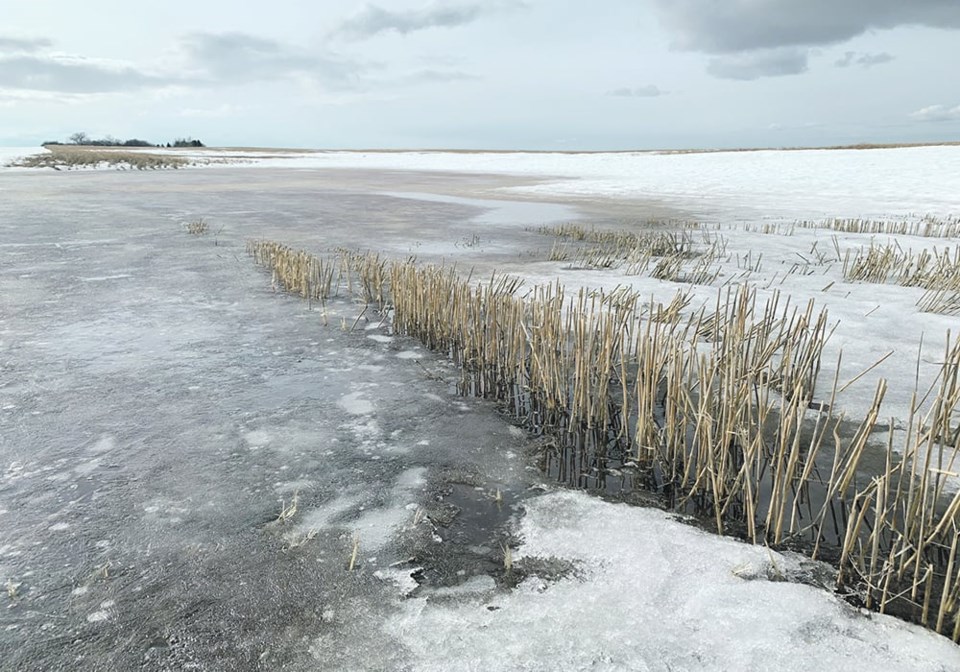REGINA — Saskatchewan producers could experience another drought year in 2024, according to the Water Security Agency’s , released Thursday.
Spring runoff is expected to be well below normal in most of the province, but it is projected to be below average in the southeast.
In the southwest and southeast corners of the province, heavier rainfall in the fall resulted in near-normal soil moisture conditions going into freeze-up. Across the remainder of the province, topsoil moisture conditions were generally below to well below normal. An early snowfall event in late October occurred across much of southern and east-central Saskatchewan.
This snowfall was followed by below normal temperatures, leaving a lot of these areas snow covered; however, thawing temperatures in November and into December melted a large portion of the snowpack.
The early snowfall could result in two outcomes:
- There is the potential in areas where the early snowfall melted for reduced infiltration capacity come spring because the topsoil will be frozen and sealed off; or
- The early, heavy snow received could insulate the soil and reduce frost penetration, which would result in more infiltration in the spring, reducing the runoff in spring 2024. Snow surveys in February will help ascertain which scenario is likely to develop.
Unseasonably warm temperatures throughout November and December, as well as late in January across the province, have caused lots of the snowpack that was present to be lost to sublimation (when water from the snowpack returns to the atmosphere instead of melting first) and even the complete melting of snow in areas of the southwest.
In the southeast region, the WSA has achieved the regular Feb. 1 drawdown elevations for Rafferty Reservoir and Grant Devine Lake. With near normal conditions at freeze-up in 2023 and what is currently projected to be a below to well-below-normal snowpack, the snowmelt runoff response is expected to be below average above the three reservoirs, and below normal below the reservoirs.
With the dry conditions in the basin, no additional releases will be required. As of Feb. 1, the WSA says only Boundary Reservoir has a potential of filling this spring. Any excess water from Boundary would be diverted to Rafferty. Currently, Rafferty Reservoir is expected to be in the normal operating range.
Detailed forecasts for the Souris River Basin are developed on or near the first and 15th of each month, beginning in February, up until the snowmelt runoff event. These forecasts can be found on wsask.ca.
As for the rest of the province, the WSA says most of Saskatchewan experienced below-normal precipitation in 2023, leading to dry conditions before freeze-up, especially in the western region from Leader to Lloydminster.
The current snowpack ranges from below to well-below normal. If below normal conditions persist, this could result in drier-than-normal conditions and localized water supply shortages, especially in the western region.
Despite dry conditions, the WSA says major water supply reservoirs in southern Saskatchewan are mostly at or above normal levels, except for Avonlea and some in the southwest, such as Altawan and Cypress that may face surface water supply concerns due to depleted snowpack.
Long-range forecasts predict near-normal precipitation and warmer temperatures than usual across Saskatchewan from February to April, with the southern areas experiencing the highest temperature increases.
The WSA says indicators suggest that there is a higher risk of agricultural and hydrological drought this year. The Water Security Agency will monitor landscape conditions and water supply reservoirs closely to allow for timely response to dry conditions. The agency will also continue to work internally and across government to identify opportunities and programming to support communities and residents in times of drought.
The next forecast will be released in early March.




